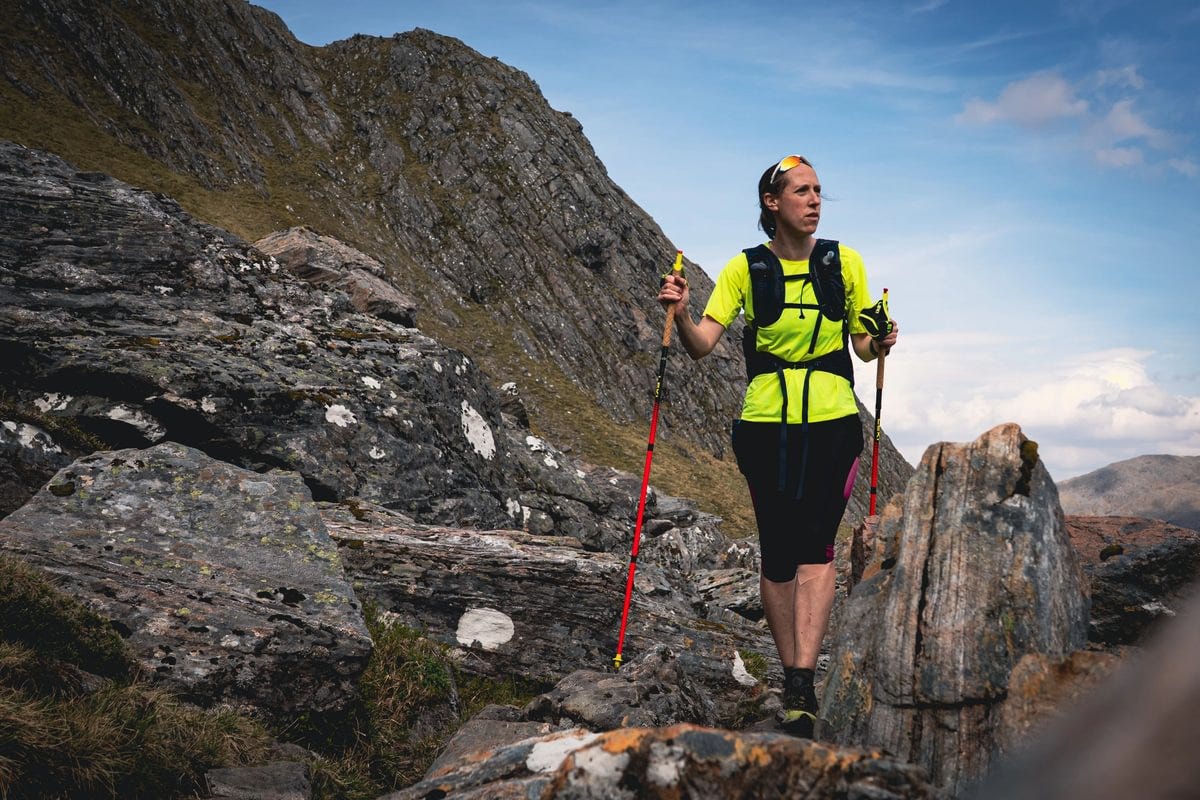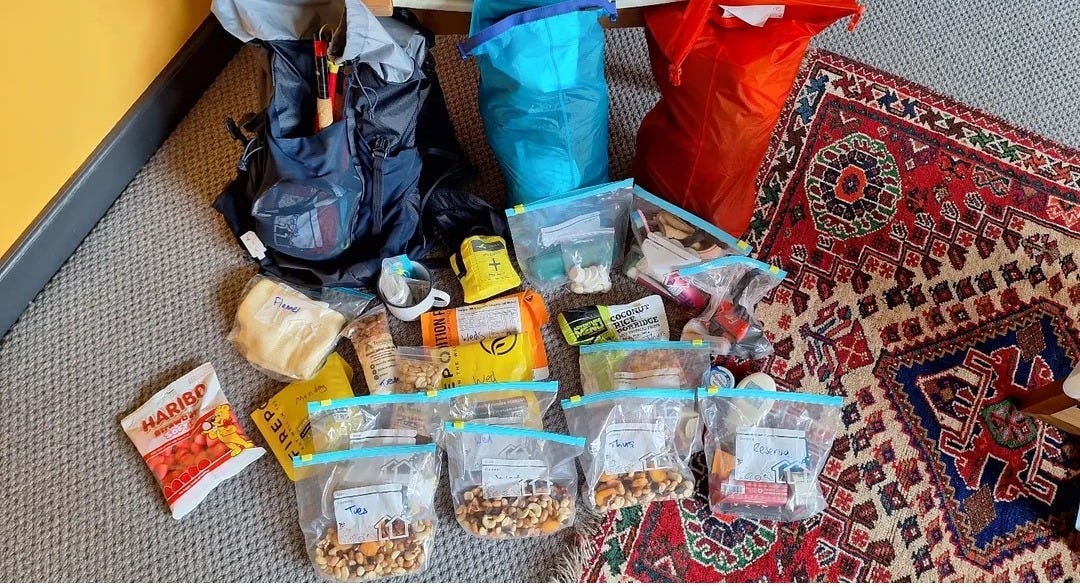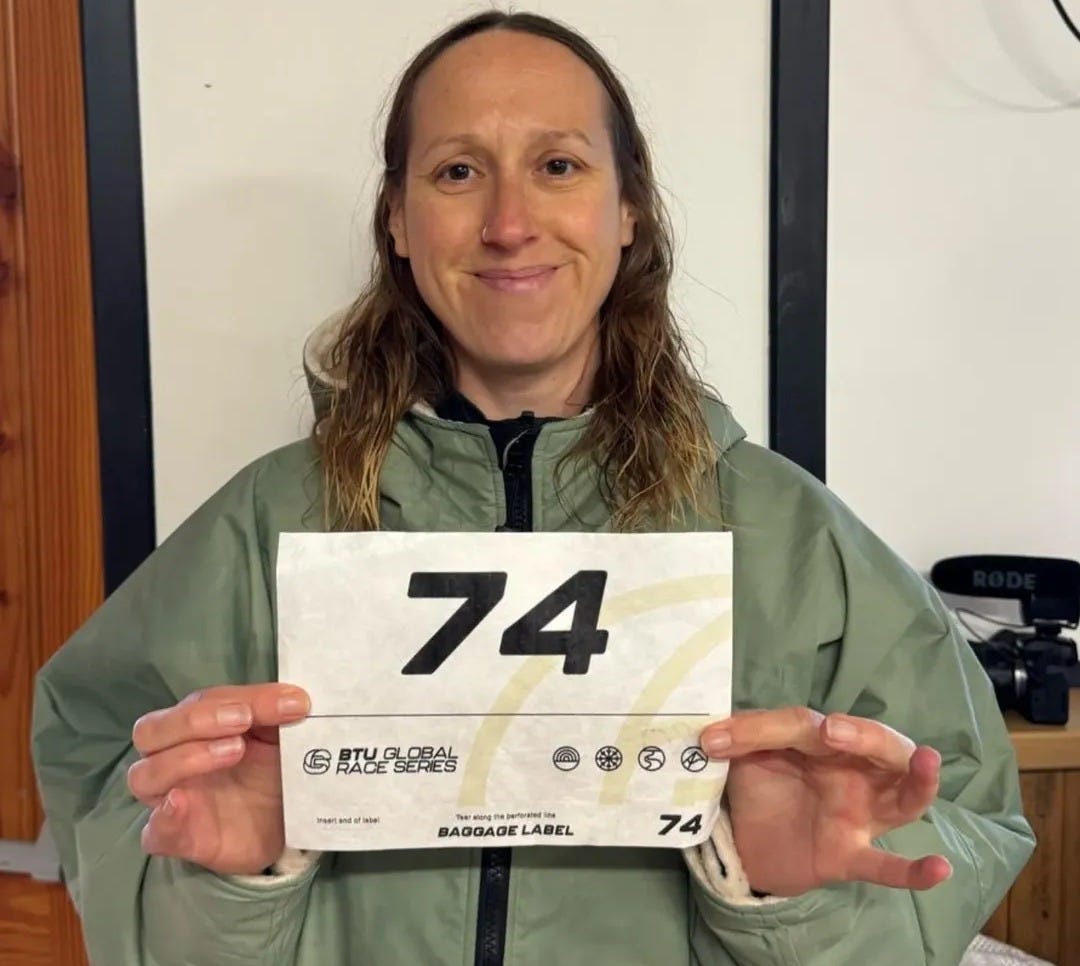I survived! Despite all my worries about being rubbish at climbing hills I finished the Beyond the Ultimate Highlands Ultra 125km race. And not only did I finish, but I somehow managed to place 2nd Female.
It was a spectacular, brutal, magnificent journey in the remote peninsula of Knoydart in the western Highlands. We covered around 120km in the end (there was a weather detour on day 3) across three days, climbing 4,500 boggy metres.
The weather was stunning, the views were awe-inspiring and the terrain was challenging. Mud, bogs, rocks, boulder fields - we had it all.
We were at the mercy of our own bodies, as there was no way out of the area except by mountain rescue or coastguard. Completely cut off from civilisation it was an incredibly empowering experience, shared by just 52 runners.
We camped together, ate together and shared horror stories together, before getting up and doing it all over again.
So just how did I get through three days of bog, elevation and sleeping in a tent? Let me spill my secrets…
1. Train smart, not long
Since getting a coach my weekly mileage has decreased, rather than increased. While training for this particular race my mileage never went higher than 70km a week and mostly sat around 50 to 60km. But it also never dipped below 40km even at the start of the training plan. I also had a couple of harder sessions a week that involved hill sprints or intervals.
Strength training was a must and I went to the gym for a 30 to 40 minute session twice a week. This REALLY paid off on the downhill stretches. When others were complaining about their quads burning mine were absolutely fine. At no point during the three days were my legs sore. Yes they were heavy and tired on day 3, but I never had any DOMS. I put this down to the gym work. I used to have big problems with painful quads after about 50km but lots of resistance training has eradicated this issue (unless I’m running downhill with the dog and putting the brakes on). I have noticeably bigger quads now and I’ve christened them my Downhill Protectors.
Another smart thing I did in training was going to Dartmoor and North Wales in the six weeks running up to the race. This allowed me to do specific training on bogs and hills. The horrendous Paddy Buckley half round I did really gave me confidence in the Highlands. I knew I’d done steep climbs before so I could do them again.
2. Play to your strengths
As I have mentioned before I am crap at going uphill. This is not me being self-effacing - it is a fact. Even my best running buddy Emma Wilkinson would agree with me. My uphill hiking is totally disproportionate to my hill and flat running. Gym work does not seem to be helping with this. But I decided not to let this worry me in Scotland. Yes, loads of people stormed past me on the climbs, but I knew my secret weapon was the descents, plus my durability.
On the first day we began on a long road stretch. My 8kg pack felt really heavy but I knew this was my opportunity to bank time. Rather than go out at a conservative pace to conserve energy I needed to put my foot down. I knew on the ascents that I would be moving much slower and that’s where my body could rest a little more. So I hit the road at what I thought was a moderate effort although at one point my heart rate did rise to a never-been-seen-before 208 beats per minute!
When it came to the downhills I stormed them as fast as I could, with plenty of childlike abandonment. On the technical descents I whizzed past all the people who had hiked past me on the hills and played to my strengths. I absolutely love running downhill so I made the most of this.
This strategy definitely played to my advantage. I made a huge amount of time on the first day which involved a 10km road section, a 5k flattish valley section, a lovely 700m descent and then a fun 11k rollercoaster section along the coast at the end. The other 22km involved wading through or up bogs and here I lost time, relative to other runners. I had a woman on my heels for the final 12km but in the end pulled away by 10 minutes because I actually learned to enjoy the chase. Despite it being a 48km day I still had lots in my legs to push in the final stretch.
The second day was 42km but a huge amount of elevation (for me, at least) taking in over 2,000m (that’s twice over Yr Wyddfan / Snowdon). My slowest kilometre traversing through mud up a gradual incline took 32 minutes! I placed 6th female that day (compared to 2nd on day 1) but it didn’t matter because I’d had such a strong first day.
3. Test your kit
I was fortunate enough to get sponsorship from Montane, Sea to Summit and Scarpa who provided me with some amazing clothing and kit. I made sure I got it in plenty of time so I could test it and work out where it would fit in my pack - since we had to carry everything for three days.
The logistics for the race were a bit of a nightmare and I spent FIVE WHOLE HOURS packing my backpack (Montane Trailblazer 24L). I had spent the months leading up to the race testing various bits of kit. In the end I choose the Scarpa Spin Planet shoes – but the male version – which was 100% the right choice. They drained really well (and I tested them in biblical conditions in the autumn), had a decent amount of grip and the men’s version were wide enough that I didn’t get any blisters (unlike the women’s).
I wore my old reliable Adidas TechFit Control Bra for three days and my firm favourite Hilly Marathon Fresh socks. My biggest concern had been pants. During the Paddy Buckley recce my usually reliable running knickers had caused horrendous chafing so in the final weeks of training I’d tested the Reebok sweat wicking Suki Bonded Briefs on my long runs. They appeared to be much more comfortable and they didn’t fail me come race week. No chafing or discomfort at all, even when I got incredibly swollen, hot and sweaty when temperatures rose into the mid 20s.
Choosing a super lightweight pair of waterproofs trousers (Montane Minimus Nano) meant I added hardly any weight to my pack and my Sea to Summit Spark Ultralight sleeping bag (510g) appeared to be the lightest and smallest in camp. One runner seemed to have just grabbed a normal sleeping bag from his garage and couldn’t fit it into his pack. I’d made sure that everything was light, small and fitted my pack.
In training I’d also practised with a number of backpacks and finally settled on the Trailblazer. This was the right decision. While other runners were taping up raw backs on day two I had no sore spots whatsoever for the three days.
Look after your feet
It can’t be stressed enough that looking after your feet is the number one priority after eating and drinking. I saw so many runners covered in blisters hobbling to the start on the final day or with revolting white trench foot-type feet at the finish line.
I avoided this by testing my shoes in advance, choosing well draining shoes rather than Gore-Tex (which just holds the water in – because it will get in when you are wading through knee deep bog), and nurturing my feet. Each morning I taped up hotspots on the sides of my big toes and tips of a couple of my middle toes and then smothered them in TrenchFoot cream. I also put on a fresh pair or socks.
I made sure to clean my shoes in the river each night to get rid off all the mud and debris inside. This meant stepping into soaking wet shoes each morning but since we were in mud or puddles within five minutes, it was more important to get the debris out than to put on dry shoes.
I came away with no blisters whatsoever and my feet were in great condition. This was the opposite of my experience in Tanzania two years ago when I got awful blisters because my shoes were slightly too big. This time I made sure I opted for prevention rather than cure.
4. Use poles selectively
For the first two days I used my poles on all the climbs. But they really started to annoy me. The path was very narrow in places meaning there was nowhere to put your poles or they kept catching on bracken or being sucked into the bog. On the third day – when I was determined to make up time again on the descent and flat – I decided to put my poles away and only use them on the one long climb.
The first 11km was very up and down and nearly everyone had their poles out but I felt they would get in my way so I leant on my thighs instead when going up hill. It did mean that some of the descents on steep rocky and muddy terrain were a little hairy but I think overall I was faster without them, and definitely less agitated.
5. Eat, eat, eat
Food was a major concern on this trip because food is heavy. We had to carry all of our gear for three days and at least 2,000 calories per day. I separated all my food into different days to make sure I didn’t eat too much on the first day. I ate pretty much everything I took which was about 7,500 calories in total.
I made sure I had a big dehydrated meal for breakfast of at least 800 calories and ate everything I was carrying for that particular day. On the third day when I was fighting to keep my podium position I didn’t eat enough in the first few hours as I didn’t want to lose time getting stuff out of my bag. My stomach started rumbling which it NEVER does in ultras because I am always eating. I had a word with myself and said I needed to stop at the top of the long climb and look after myself. This meant eating something and putting my gloves on because it was getting very chilly at the top. This gave me the energy boost and comfort I needed to finish strong.
What did I learn from the whole experience?
Although I’ve done a couple of multi-stage races before I’ve never had to carry all my gear. The thing I had been worrying about the most was the weight of the pack. But although I hate to say it - I did kind of get used to it. Yes, it was heavy but all that meant was that it slowed me down. It didn’t imped me in any other way or cause me any pain. So would I do another race carrying all my gear? Probably. Maybe. Although it wouldn’t be my first choice.
I also learnt how to enjoy being competitive rather than let it become stressful. When I won a 100k race last year the whole experience was marred by the stress of staying in front. But this time I treated it like a game, and enjoyed being chased, using it to motivate me to push myself. So maybe there is a way to find a balance between enjoying a long race and still pushing the pace.
How to be an ally to women
Last week I shared an example of a male runner mansplaining my own book to me before he had even read it. Well I am pleased to say that another man stepped up and shot him down. I didn’t know who this man was and although I didn’t need rescuing I was still grateful for his allyship. He was courteous but firm, and a great example of how to be an ally to women. I particularly loved his parting words…
Thanks for reading this week’s newsletter. Send feedback to lilycanter@yahoo.co.uk or suggest topics you’d like me to cover.











Congratulations, what an amazing achievement and I’m sure readers will appreciate your fabulous tips on gear, eating, mindset and preparation. It’s unlikely I’ll ever run any ultra but it’s great to read about your experience. I’m off to order your book!